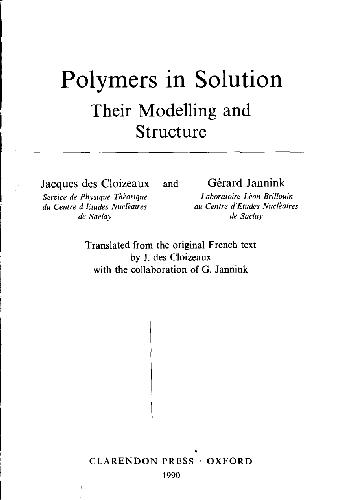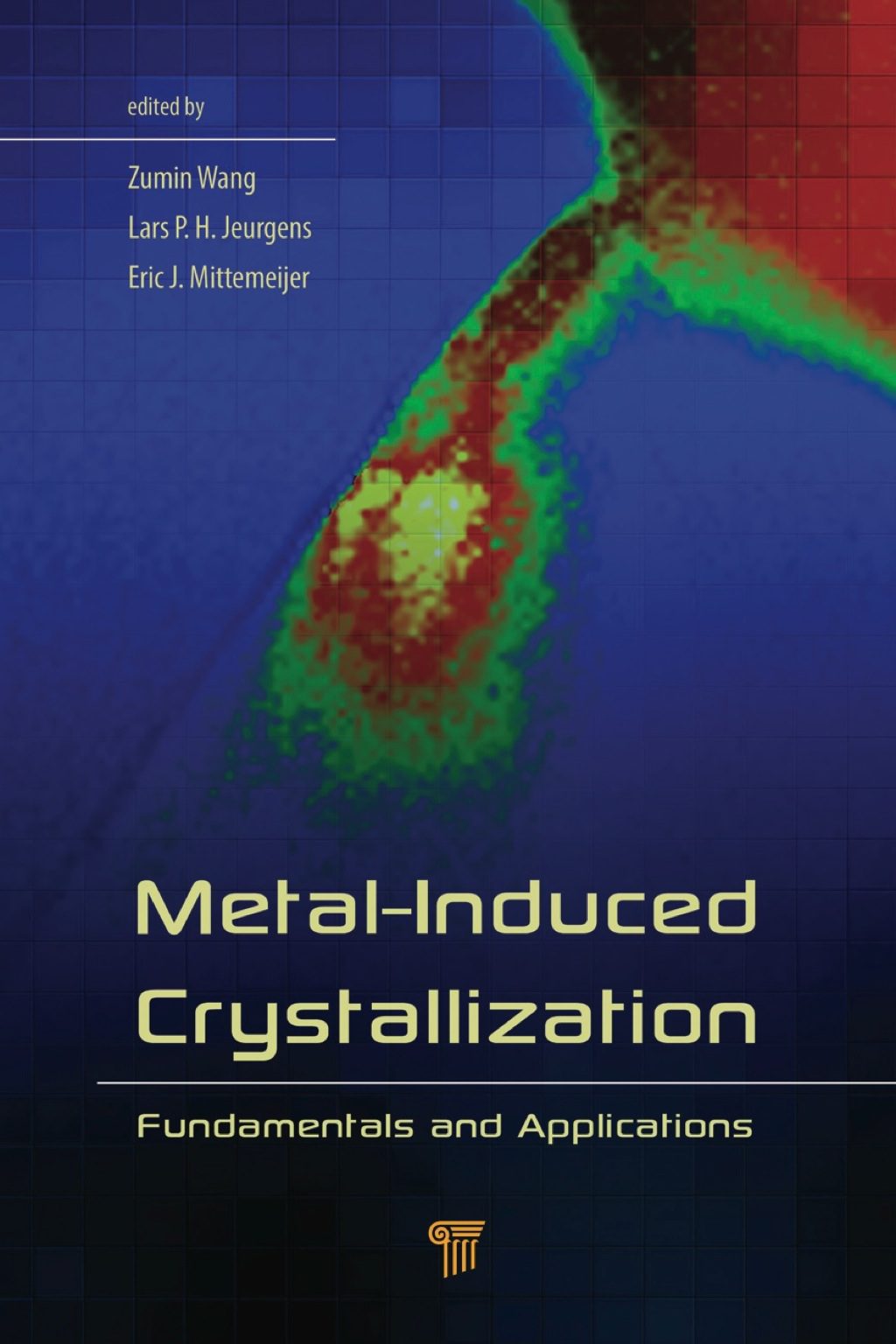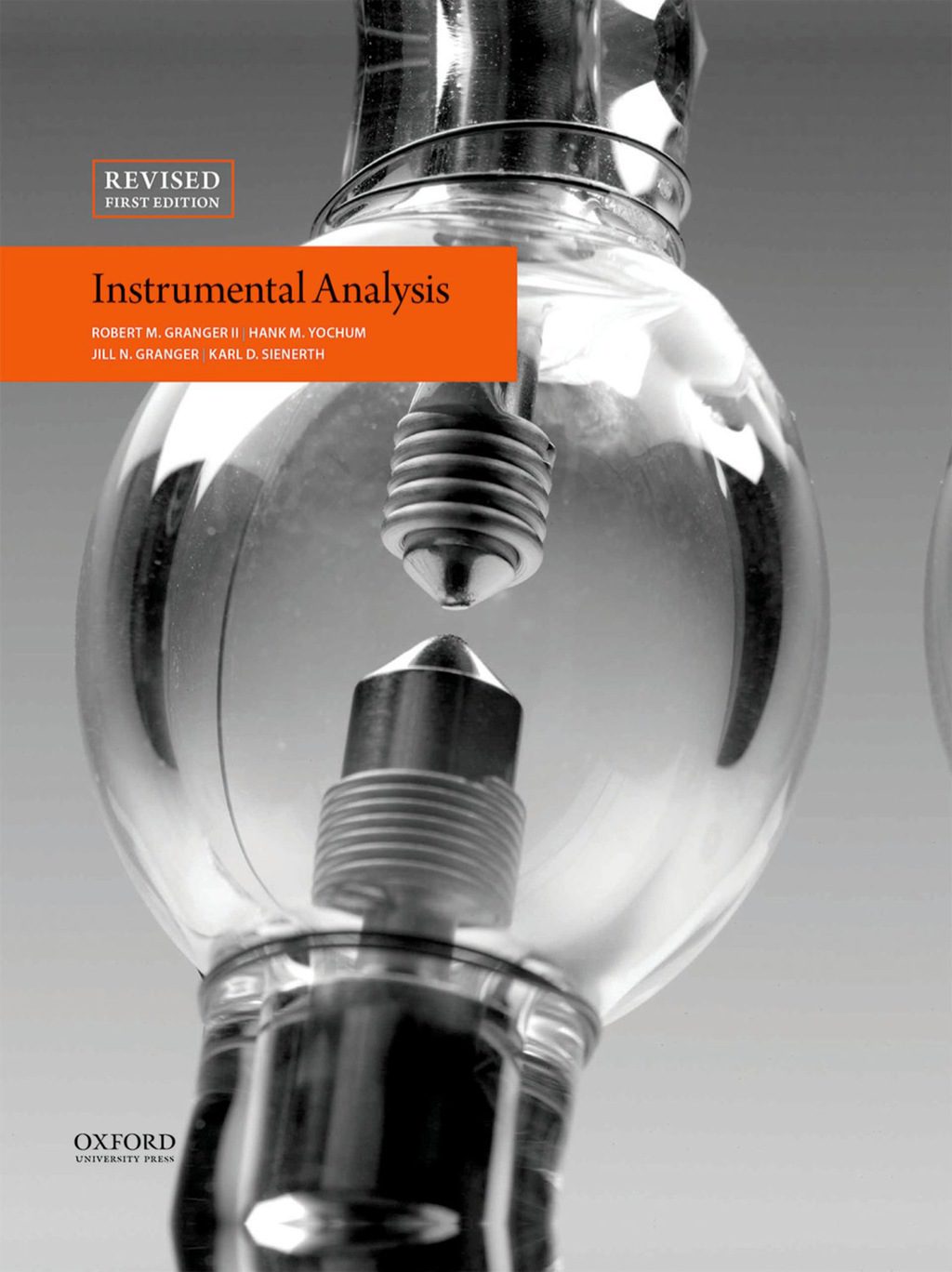Jacques des Cloizeaux, Gerard Jannink, G. Jannink, J. des Cloizeaux9780198520368, 0-19-852036-0
Table of contents :
TITLE PAGE……Page 1
COPYRIGHT INFO……Page 2
PREFACE……Page 5
ACKNOWLEDGEMENTS……Page 8
6. Size-exclusion chromatography……Page 9
3. On a few simple properties of chains with repulsive interactions……Page 10
1. Volume and surface osmotic pressure……Page 11
4. Scattering by a macroscopic sample……Page 12
2. Structure function……Page 13
3. Canonical and grand canonical ensembles……Page 14
4. Diagram expansions: basic rules……Page 15
2. Analogy between an isolated polymer and a ferromagnetic system in zero external field: a comparison between critical exponents……Page 16
3. Analytic renormalizations……Page 17
1. Isolated polymer in good solvent……Page 18
2. General theoretical considerations……Page 19
6. Continuous model with attraction. Application of renormalization techniques……Page 20
4. Polymers in good solvent: solution with overlap……Page 21
5. Collapse of polymer chains in dilute solutions……Page 22
APPENDIX F: Area of a ball in a space of dimension d……Page 23
APPENDIX J: Schwinger’s and Feynman’s identities: application to the calculation of diagrams……Page 24
APPENDIX M: Fourier transform of r^-alpha……Page 25
NOTATION AND MAIN SYMBOLS……Page 26
Genesis……Page 42
1. Generalities and definitions……Page 44
2. Physical properties of polymers……Page 50
3. Synthesis of polymers……Page 56
4. Description of a few polymers……Page 65
5. Measurement of molecular masses……Page 72
6. Size-exclusion chromatography……Page 73
7. Field-flow fractionation……Page 81
Genesis……Page 83
1. Chain with independent links and the Brownian chain……Page 86
2. Chain with excluded volume and the Kuhnian chain……Page 92
3. The number of configurations and the entropy of a chain with excluded volume……Page 98
1. Number of self-avoiding chains on a lattice……Page 104
2. Chains covering a lattice……Page 117
3. On a few simple properties of chains with repulsive interactions……Page 123
4. A study of a few simple models……Page 132
2. Self-avoiding chains……Page 150
3. Partially attractive chains……Page 165
Genesis……Page 175
1. Volume and surface osmotic pressure……Page 176
2. Densitometry……Page 210
1 Electromagnetic radiation and neutron radiation……Page 220
2. The scattering experiment……Page 227
3. Radiation scattering by an elementary centre……Page 229
4. Scattering by a macroscopic sample……Page 253
5. Experimental study of a scattered radiation (neutrons, light)……Page 273
6. Summary……Page 282
Genesis……Page 285
1. Conditions of observation……Page 286
2. Structure function……Page 288
3. The rules of small-angle scattering……Page 307
Genesis……Page 330
1. The isolated repulsive chain……Page 331
2. Repulsive chains at finite concentrations……Page 354
2. The models……Page 369
3. Canonical and grand canonical ensembles……Page 370
4. Homogeneous polymers: expansions in powers of the concentrations……Page 386
5. An approximate grand canonical ensemble: the equilibrium ensemble……Page 393
1. Description of the standard continuous model……Page 395
2. Comparison between various polymer models……Page 398
3. Another formulation of the continuous model: Edwards’s transformation……Page 399
4. Diagram expansions: basic rules……Page 400
5. Grand canonical ensembles: osmotic pressure and structure of continuous chains……Page 428
6. A study of the tree structure in polymer diagrams……Page 431
7. Effective calculations: isolated chain with two-body interaction……Page 445
8. Effective calculations: set of chains with two-body interactions……Page 458
9. Summary……Page 470
Genesis……Page 472
2. Analogy between an isolated polymer and a ferromagnetic system in zero external field: a comparison between critical exponents……Page 473
3. Fields and sets of chains: diagrammatic methods……Page 476
4. Fields and sets of chains: analytical method……Page 482
5. The one-field Landau-Ginzburg model. Application in polymer theory……Page 490
6. Hamiltonian circuits and field models……Page 505
Genesis……Page 510
1. Introduction……Page 511
2. Iterative renormalizations……Page 512
3. Analytic renormalizations……Page 520
4. Exact exponents in two dimensions……Page 562
1. Isolated polymer in good solvent……Page 580
2. Properties of ‘good polymer solutions’……Page 633
Genesis……Page 690
1. Polymers in poor solvents: experimental observations, existence of demixtion……Page 691
2. General theoretical considerations……Page 692
3. Isolated chain: Flory’s theory in the attractive case……Page 701
4. Isolated chain: Lifshitz theory……Page 706
5. Polymer solutions: Flory-Huggins theory in the attractive case……Page 716
6. Continuous model with attraction. Application of renormalization techniques……Page 723
7. Partially attractive polymers in two dimensions……Page 749
Genesis……Page 754
1. Determination of the basic quantities from experimental results……Page 755
2. Reference to the Brownian state: the atactic polystyrene case……Page 766
3. Polymer in good solvent: dilute solution (polystyrene)……Page 772
4. Polymers in good solvent: solution with overlap……Page 802
5. Solutions of long chains in a melt of chemically identical but shorter chains……Page 831
Genesis……Page 836
1. Determination of the basic parameters of polystyrene in cyclohexane at a temperature close to TF……Page 837
2. Demixtion curves: general features……Page 838
3. Flory temperature……Page 845
4. Properties of a solution in the vicinity of the critical demixtion point……Page 850
5. Collapse of polymer chains in dilute solutions……Page 865
6. A study of the structure of the solute as a function of concentration: osmotic pressure of concentrated solutions……Page 871
7. Demixtion of a liquid made of deuterated and non-deuterated polymers belonging to the same species……Page 875
APPENDIX A: Gaussian random set, probability over a subset, Wick’s theorem……Page 880
APPENDIX B: Number of partitions of an integer: Hardy-Ramanujan theorem……Page 885
APPENDIX C: Free energy of an ideal incompressible solution and chemical potentials……Page 887
APPENDIX D: Electromagnetic field produced by an oscillating electrical dipole……Page 890
APPENDIX E: Form function of a few characteristic structures: Behaviour for large wave vector transfer……Page 892
APPENDIX F: Area of a ball in a space of dimension d……Page 899
APPENDIX G: Analytic continuation of certain integrals……Page 900
APPENDIX H: Dimensional regularization and renormalization of the short-range cut-off-dependent……Page 903
APPENDIX I: Legendre transformation and tree diagrams……Page 912
APPENDIX J: Schwinger’s and Feynman’s identities: application to the calculation of diagrams……Page 917
APPENDIX K: Probability distribution of the end-to-end vector of a long sel-avoiding polymer: first-order calculation in e = 4 – d……Page 922
APPENDIX L: Maxwell’s rules……Page 925
APPENDIX M: Fourier transform of r^-alpha……Page 927







Reviews
There are no reviews yet.